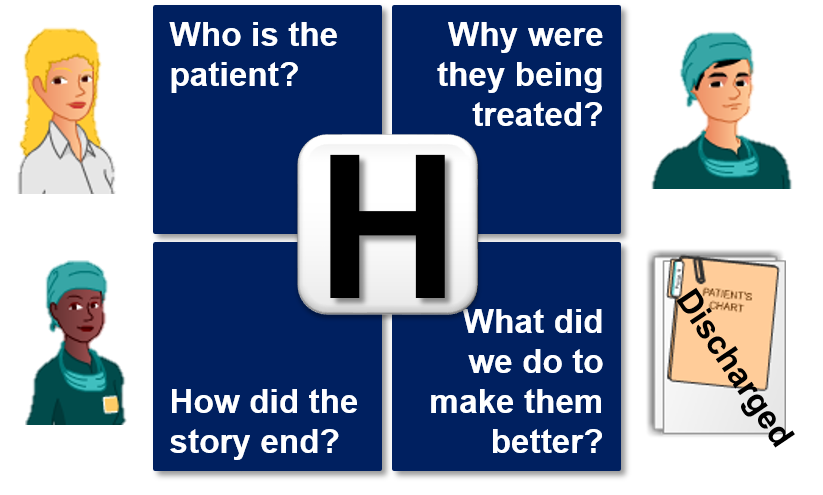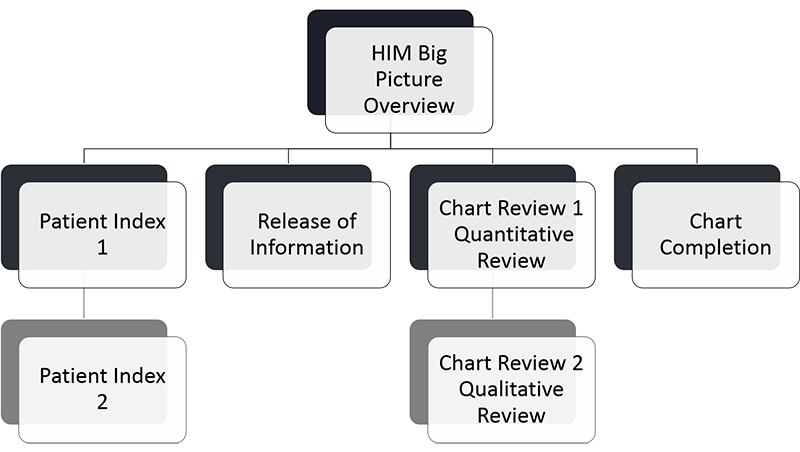Key Results Summary
Developing a Health Care Metaphor to Support a Multi-Course E-Learning Curriculum
Situation:
The Revenue Cycle Academy of a major New York City hospital was developing a multi-course e-learning program for the hospital’s Health Information Management department. The courses addressed Patient Indexing, Release of Information, Chart Review, and Chart Completion. Each course included several activity or process topics and numerous paths to follow in different circumstances.
The Revenue Cycle Academy had a specific content structure for its courses that included the following components:
- Challenge Exercise [warm up to demonstrate importance of what is to be learned]
- Core Concepts [necessary prerequisite knowledge and skills]
- Implications [of the training to the hospital’s Revenue Cycle]
- Pathway [procedures, process, knowledge , and what-if’s for the core course knowledge]
- Practice [activity to practice what was learned]
- Knowledge Check [end of course learning assessment]

The Health Information Management department focuses on patient medical records which were electronic medical records. This includes the release of records with proper authorization, issuing new patient medical record numbers, and verifying that patient records are complete and compliant. Many situations arise including patients with duplicate medical records, records that are co-mingled, and validating the medical records have all necessary contents and that those contents are complete, signed, dated, etc. The e-learning courses needed to address all of the activities and processes including the what-if situations that arise with them.
Action Plan:
Meetings with Health Information Management SME’s revealed that understanding who the patient is was crucial in many activities and processes. For example, an 80 year old patient with the same condition as a 30 year old patient would probably have a different set of medical records due to differences in how they might be treated and due to the differences in the general physical condition. Also, it was important to know how the patient came to the hospital; outpatient, emergency, or scheduled admission. Lastly, many medical records are interrelated. For example, a patient who has surgery should have other records including aesthesia records, pre-surgery testing records, authorizations and releases, in addition to the surgical records that are kept.
The SME’s also described how the Health Information Management staff worked in specific areas. As such they would typically take one course but might want to take others to pursue opportunities to work in other areas. The knowledge requirements to review medical records for completeness were dramatically greater than the knowledge required to process requests to release medical records. However, in all cases a degree of critical thinking was required and understanding the patient was important. Supervisors and management frequently stressed this to the staff that they needed to understand the patient’s “story”. Understanding the patient is a who, why, what , and how thought process.
Because every Revenue Cycle Academy course had certain standard components and the Health Information Management content contained numerous activities and what-if situations the courses were going to be extremely long. A means was need to reduce the courses into shorter, focused topics. It was also important to tie all of the material together with a common theme or story thread.
Results:

A metaphor was developed to emphasis understanding the patient story. “Every Patient Chart Tells a Story” became an integral part of every course. The graphic to the right was designed using the hospital’s standard clipart library and included in the course material to explain why the patient’s story was important. Each of the four parts of the story were explained with a fictional patient who would be appear in other courses when understanding the patient’s story was an important part of a procedure or activity.
The course structure was then layered into hierarchical courses. There would be a Health Information Management Big Picture course that would cover the required Core Concepts and Implications [to the Revenue Cycle] and then expand on why it was important to understand the patient’s story. This course became a prerequisite to all other courses.

